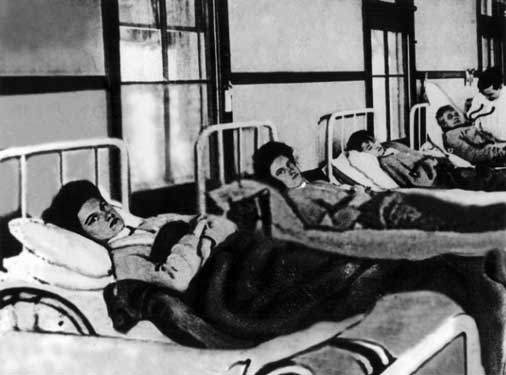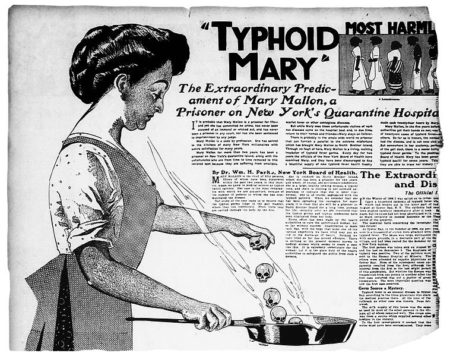Who was Typhoid Mary?
by Ailsa Harvey · 17/10/2020
How a cook’s recipe of ignorance and ice cream resulted in the infamous outbreak of a deadly disease

Mary Mallon (left) ended up being forced to quarantine (Image source: Wikimedia Commons)
Mary Mallon was an exquisite cook. The meals she prepared were so well received that the Irish immigrant was offered numerous jobs cooking for wealthy families across New York. Unfortunately, while her abilities in the kitchen could have made her a culinary name, in the end it was her inability to wash her hands that gained her a new nickname: Typhoid Mary.
Typhoid is a bacterial infection caused by Salmonella typhi, which leaves the infected suffering from a fever and problems throughout their digestive system. Usually typhoid is spread through food and water contamination and poor hygiene levels, but Mary caused outbreaks in the relatively sanitary homes of wealthy families.
Everywhere Mary cooked, typhoid descended upon the households, and it wasn’t long before the link between her and the outbreaks was discovered. Mary’s reluctance to wash her hands properly led to plates of infection being served to everyone she cooked for. Despite dozens of people falling ill around her– and with three dropping dead – remarkably Mary still showed no sign of infection. Because of this, when Mary was told by authorities that she was carrying the disease, she denied it. Up to six per cent of people infected with Salmonella typhi are thought to be asymptomatic carriers, and Mary was one of them.
As the bacteria continued to live inside her, she showed no signs of illness and became a mass spreader. Unwilling to give up her job, Mary changed her name and continued cooking in denial of her harmful ways. Responsible for suffering, death and even a hospital outbreak, at the time she and many others were unaware of the link between hand washing and some diseases. The story of Typhoid Mary shows how this simple act can defend against an outbreak of disease.
Infected ice cream
Hygiene is essential in any kitchen, as people not only come into contact with its products, but ingest them. This being said, even when germs are spread to food, many end up being cooked at temperatures high enough to kill them. One of the main questions of the investigation into the typhoid outbreak was how so many fell ill: the answer came when exploring the types of dishes Mary served.
One of her most popular treats was a peach ice cream dessert. Any microbes reaching this food would not be heat treated. Mary’s unwashed hands were used to hold the peaches while she cut them, a crucial factor in this disastrous typhoid outbreak.

(Image source: Lupo/ Wikimedia Commons)
Who blamed Mary?
Charles Henry Warren was a rich man, working as a banker and living in a large family home to be proud of. When six members of his household came down with a disease rife in poorer communities, Warren was shocked. He needed an explanation as to why typhoid fever, which he thought only existed in the slums, was spreading through his immaculate home.
A sanitary engineer was hired, who looked into all the workers at the house. When he came across Mary, a cook who had begun working there weeks before, he found that the Warren household wasn’t alone in its sudden illness. Seven other families who Mary had served had also reported having the same symptoms.
For more science and technology articles, pick up the latest copy of How It Works from all good retailers or from our website now. If you have a tablet or smartphone, you can also download the digital version onto your iOS or Android device. To make sure you never miss an issue of How It Works magazine, subscribe today!





